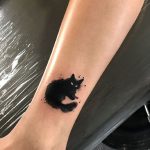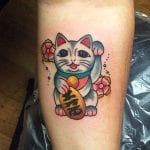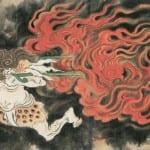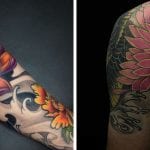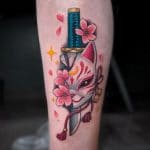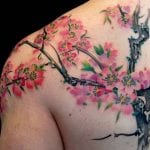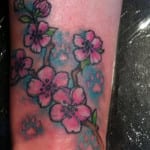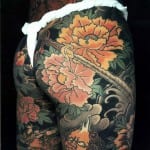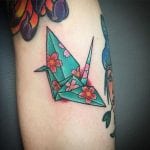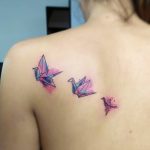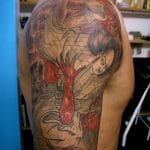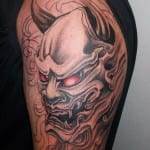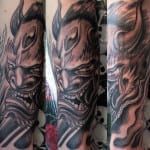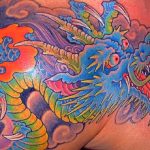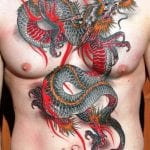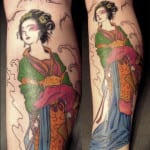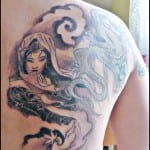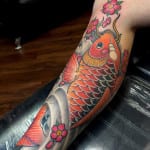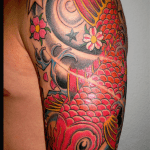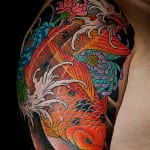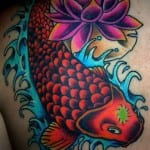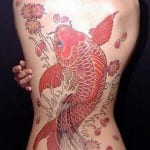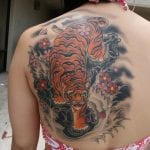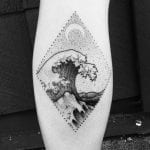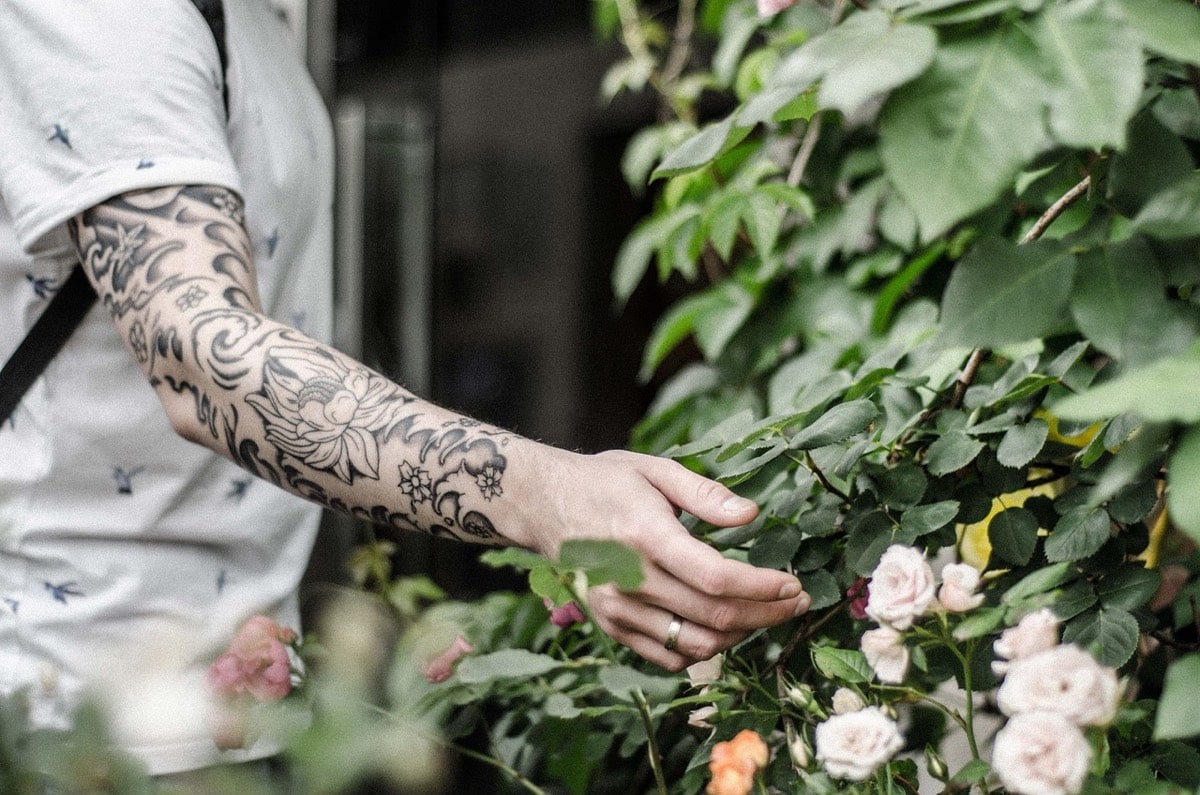
Japanese tattoos are expressive and bold, which is why they have become a style appreciated all over the world.Bright colors and interesting shading make your designs eye-catching and exciting. The images used are usually a way to honor the folklore or tradition of Japan. The most common designs are based on mythological beings, such as dragons or the phoenix, nature, animals and the supernatural.
As appreciated as this technique is, it was also shrouded in a great deal of controversy. The Yakuza mafia group is synonymous with body art. Its members get tattoos all over their bodies to show their strength and commitment. For this reason, In Japan, tattoos carry a great stigma.. However, we are going to see what this technique so admired by everyone consists of.
What are traditional Japanese tattoos?
Traditional Japanese tattoos are also known as Irezumi. It is an ancient tattoo technique and very rich in symbolism. Body art is usually made up of several different themes, which can be inspired by folklore or tradition. Common images in these tattoos are oki fish, dragons, geishas or flowers.
Japanese style is different e identifiable by their vibrant colors and the themes they use. Despite the negative connotations that these types of tattoos had, they have become very popular all over the world. However, it is essential to know that some images can be considered offensive, such as tattooing religious images or that are likely to interpret dark stories.
What is a Yakuza tattoo?
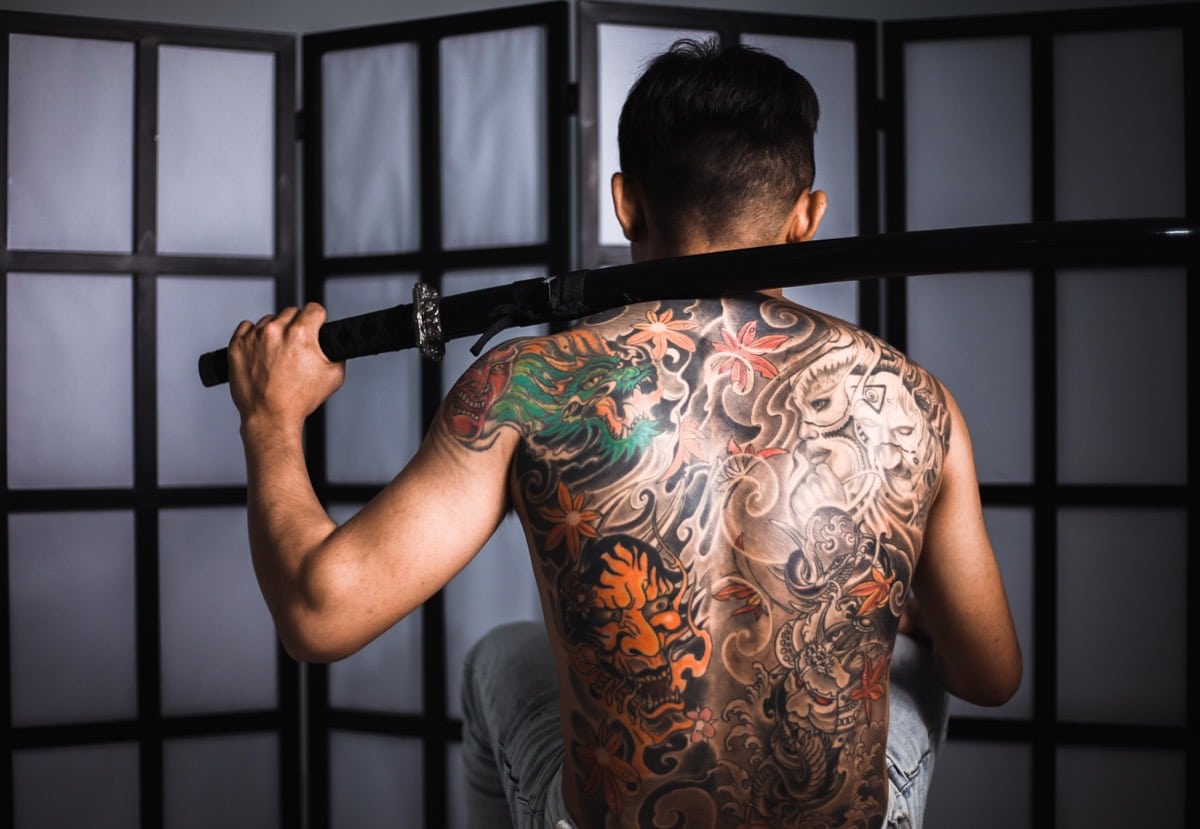
Japanese tattoos are very beautiful and expressive, but they have quite a bad reputation due to their relationship with the Yakuza mafia gang. This criminal gang is known for covering their bodies with tattoos as it is a way of marking their members for life. It's a way of showing your loyalty and your ability to take pain.. In the past, tattoos in Japan were illegal, which was another reason for criminals to adopt them. Bearing this in mind, you also have to know that in the XNUMXst century some Yakuza do not tattoo their entire bodies, because it makes it easier for them to blend in with the rest of society.
The color in Japanese tattoos
Although the designs in Japanese tattoos are very important, so is the color. There are Japanese tattoos that combine black and gray, but the most striking and identifiable part of this technique is the brightness. There are several color schemes to choose from, depending on the chosen theme, and each one has a different symbolism. For example, a black oki fish is associated with masculinity, adversity, and perseverance, while a green dragon is connected to nature.
Let's see, therefore, the most significant colors in Japanese tattoos:

(Source).
- RED. It is one of the most vibrant colors used in tattoos. In the Japanese gene represents many things, such as strength, passion and blood. Shrines and temples may be painted red, and the color is incorporated into important events and even appears on their national flag. It is also believed to ward off evil spirits and can symbolize peace and financial success.
- BLUE. Blue is a popular color for Japanese clothing and is often worn in the workplace. This color can be associated with hard work, loyalty and acceptance.
- Black. It is a popular color for tattoos. The letters are usually done in black ink and are associated with mystery or mourning. It is an intense shade, often seen as masculine, and has a rich history in tattooing. Depending on the design chosen, it can have even more meaning. For example, a black dragon symbolizes wisdom, and a cat of the same color can ward off evil.
- Blanco. White is a sacred color in Japan. It can represent mourning and death, as well as purity, peace and honesty. For some, it is associated with new beginnings and links to the spirit world. In tattoos, it creates an eye-catching contrast when layered with black or grey, and is a subtle way to add more detail.
- Violeta. Purple or violet is a stunning color for body art because it's so bright, plus it's significant in Japan. In this country, purple or violet is associated with royalty and strength. It was one of the most expensive colors to produce, which is why it was so prized. It was a color that was reserved only for those who could afford it.
- Rosa. Pink is a color associated with feminine power, beauty, and good health. In Japanese art it is commonly used with cherry blossoms. It's a great color to highlight and add some sparkle to your tattoo.
- Verde. This color represents nature and life. In Japan, it is also associated with energy and vitality.
- Yellow. It is the color of warmth, joy and prosperity. There are few colors as striking as this one. It is also a symbol of sunlight. In some areas of the Land of the Rising Sun it is considered a sacred color, while in others it has a negative association. It can be a complement to many motifs such as flowers or dragons. For another lake, gold is linked to power and the gods, so it is a popular color to decorate sanctuaries and temples.
Popular Japanese Tattoo Designs
- The demon cat Kasha
- (Source).
- (Source).
- Impressive horimono photographed by Sandi Fellman
- Japanese style peony tattoo (Source).
- Peony tattoo on the leg (Source).
The cat
Cats are associated with wealth and good luck, so they are great to wear on your skin. There are several ways to design a cat tattoo. While some people take the more traditional approach, others may choose motifs appreciated in Japanese culture. From food, clothes, bells or red lanterns. It is essential not to be offensive with your design, and it is always best to avoid sacred and religious images. The most advisable thing is to always respect the technique from its cultural origins.
Cherry blossom
Cherry blossoms are one of the most beautiful flowers and their pretty pink color makes them a perfect addition to any landscape. The Cherry Blossom It has a very short life, which makes its flowering a symbol of life and the ephemeral. The cherry blossom season is a reason for celebration in Japan, which is why it can be associated with joy. This flower is also related to strength and perseverance and is a common image in Irezumi, for its beauty and symbolism.
The lotus flower
The lotus flower is one of the most important in Japanese culture. They are normally included in aquatic scenes or, it is represented alone. This beautiful flower grows in murky waters, and many people are inspired by seeing them. The lotus flower reminds you that when life is hard, you can still find beauty in it. Another way to interpret its symbolism is as a way to never give up and continue to persevere.
the peony flower
This beautiful flower symbolizes prosperity and good fortune, but it is also linked to life, perseverance, bravery and honor. She is usually tattooed both alone and accompanied by other reasons such as a geisha or a crane.
Cloud
Japanese clouds are bold locks that are known as Kumo. They can be tattooed alone or as an infill with other images. Clouds symbolize admiration for nature. They are also a symbol of important ideas, masculinity, impermanence and change.
The crane
The crane is of great importance in Japan. It is considered a symbol of peace and hope. It is considered an otherworldly creature, making it a deeply respected and admired bird. This bird can bring luck and good fortune but it also represents longevity and wisdom. The design is usually detailed and includes other motifs such as a sun or flowers.
The demon
Demon tattoos usually have a very interesting meaning. The most popular image is Oni, a kind of ogre or demon that is part of Japanese folklore. It can represent the balance between good and evil. It could be seen as a reminder that harmful acts will not go unpunished. It was also common to represent a demon to intimidate other people.
The Dragon
Dragon tattoos are some of the most popular designs. This mythical creature has great significance in Japanese culture and represents bravery, strength, and wisdom. There are many colors to choose from, each with its own different meaning. Black is associated with wisdom and green with nature, while yellow dragons are noble.
- The koi is usually represented by the red maple tree, not the lotus
- Koi carp
the japanese woman
Geishas are part of the history of Japan. These women are associated with attractiveness, femininity, and grace. A tattoo of a geisha, or Japanese woman, is a tattoo for both men and women. It represents perfection, respect and intense beauty. It is also seen as a symbol of Japanese culture.
the koi fish
These fish represent strength, success, achievement, determination, and good luck, among other things. In Japanese tattoo art, this is one of the most popular images due to its importance and symbolism. Depending on the color, its meaning may vary. For example, red represents love, power, and motherhood, while black is associated with adversity and striving for success.
The mask
Japanese masks are usually related to a type of traditional Japanese theater, which was declared an intangible cultural heritage of Humanity in 2001. The most represented mask in Japanese tattoos is the Hannya. It is a mask symbolizing good luck and used to ward off evil. However, this mask has a special history as it represents the image of a woman so consumed by passion and love that her image has become monstrous. This interpretation is suitable for those who want to show in a tattoo that they have had their heart broken, or that their love interest was rejected.
The Phoenix
The phoenix is normally associated with birth, death, and rebirth. The Japanese phoenix is a mythical creature that represents fire, justice and power. It is believed that those who wear it is because they are honest and loyal.
Tiger
Tigers are fearsome and respected predators. They are often considered protectors and symbols of strength and power. In Japanese tattoos, they are considered a way to ward off negative energy, evil spirits, illness, and disease. This big cat is often depicted as fierce and intimidating. It is best to complete the tiger tattoo design in color and over a wide area of the body. This makes for an impressive and eye-catching piece.
Waves
Waves are a fantastic image to tattoo because they represent strength and life. They are a symbol of change, as water is a recurring pattern of comings and goings. This image can relate to life as we experience ups and downs, live and die. It can also be seen as a way of moving forward, accepting the situations you find yourself in. The wave symbol it is shown as an arch and can be inked black and gray, or blue. It is traditionally associated with good luck and resilience. In more modern times, it is depicted as the famous Ukiyo-e image of the Great Wave off Kanagawa, made by Katsushika Hokusai.
